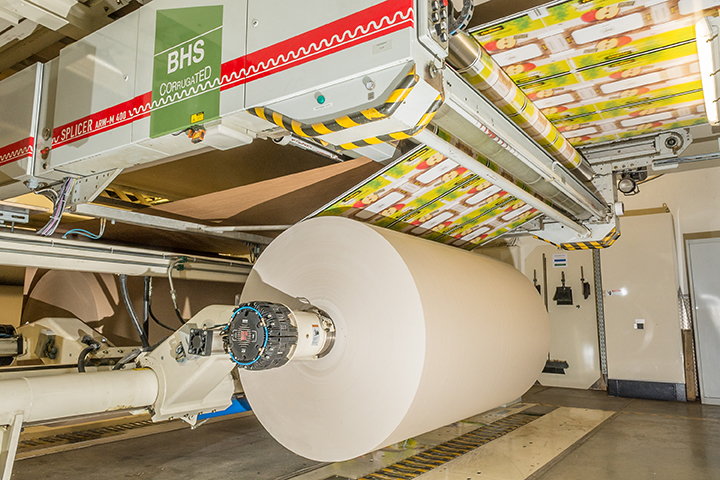Remshalden/Stuttgart, 17 August 2016 – The Klingele Gruppe, one of the leading, independent manufacturers of corrugated base paper and packaging made from corrugated board, uses RFID technology together with its partner and supplier Christiansen Print in order to optimise the entire logistics chain. Christiansen Print is the European market leader in the pre-printing sector; the company processes a printing volume of approx. 15 million sqm for Klingele every year. Now, Christiansen Print is set to equip the rolls of paper for Klingele with RFID transponders, which will use wireless technology to enable the automatic identification of the rolls throughout the entire process chain, right up to their complete consumption. As a result, Klingele will be able to optimise its internal logistics and create maximum transparency in terms of its paper consumption, whilst Christiansen Print will strengthen its position as technological leader in the paper and printing sector.
Automatic data collection and connecting the logistics processes of both companies bring security and reliability in processes and ensure seamless interfaces – even in its outgoing goods, Christiansen Print issues a digital delivery note in xml format. Meanwhile, in the Klingele goods receipt area, logs are made in the SAP system and the items are stored using clamp trucks that automatically record the product data via RFID antennae. The exact storage position is noted in the system – after all, Klingele has already been using RFID technology in its warehouses for years. During production on the corrugated cardboard system, the rolls are read by antennae and the exact paper consumption is recorded in the SAP system. And if any residual paper is left on the roll, it is automatically credited back into the system.
RFID technology successfully in use for years
Klingele already began using RFID technology to optimise its goods consignment and warehouse logistics years ago. During a second phase, the technology was developed further to enable the identification of paper rolls from the company’s own paper mills. This involves attaching a transponder to the sleeve and then wrapping the paper around it in order to guarantee that the transponder sits perfectly protected inside the roll. As a result, the product data recorded on it can be automatically identified throughout the entire life cycle of the roll.
Nevertheless, Klingele procures approximately 50% of its paper from external suppliers. With these rolls, the transponders have to be manually attached to the core of the sleeve, which involves arduous and time-consuming labour. For pre-print deliveries from Christiansen Print, however, this task is no longer necessary – which, in light of the supply volume, presents a significant advantage. Christiansen Print is also planning to convert its own warehousing system to RFID, in addition to its further development to other printing tools. RFID technology also opens up even more possibilities concerning data analysis and process optimisation, despite the fact that the main aim of Christiansen Print is to use ‘digital collaboration’ to offer Klingele the best service whilst expanding its strong position as a partner and supplier.
Quicker and more reliable than barcodes
RFID technology presents countless advantages when compared to the conventional barcode procedure used in the sector. Given its position in the core of the sleeve, the RFID chip remains protected from damage, cannot be lost and remains intact throughout the entire process. With barcodes, however, the label is always attached to the outside of the roll, meaning that re-labelling is required after every production step. In addition, the barcode label always has to be in a specific position to the forklift window; if this is not the case, time-consuming, manual identification using a manual barcode reader is required. Finally, wireless radio technology enables automatic data capture and updating at every step, thus eliminating the previously necessary manual entry in the SAP system.
Paper logistics traceability and transparency
‘In light of its significant advantages, RFID technology will assume growing importance within the context of Industry 4.0,’ states Dr Jan Klingele, Managing Partner of Klingele. ‘Even now, we are able to supply our customers quicker and with an error rate of almost zero; traceability of the paper used also gives us a crucial competitive edge in sensitive sectors like the food industry. I am delighted that we are able to extend this advantage through our collaboration with Christiansen Print. ‘Christiansen Print and Klingele are united by the desire to use innovation to benefit our customers,’ adds Henrik Jensen, CEO of Christiansen Print. ‘As a technology leader, we therefore assume an advantageous position in relation to our customers; against this background, we are confident that other paper suppliers will follow suit.’




